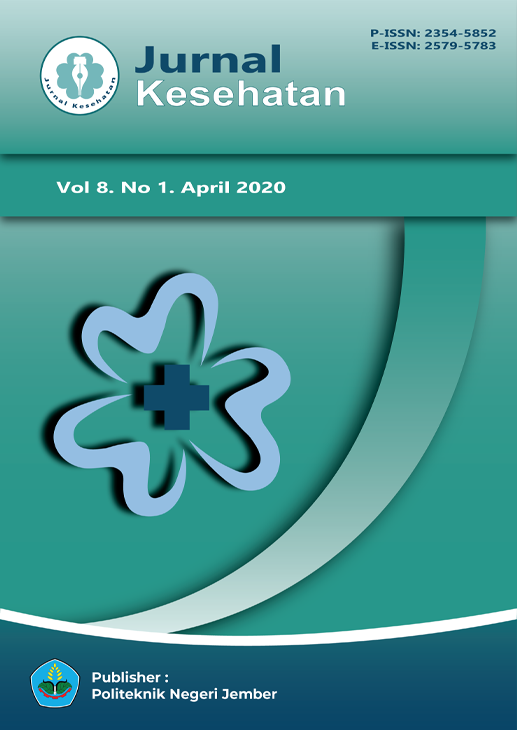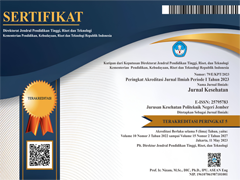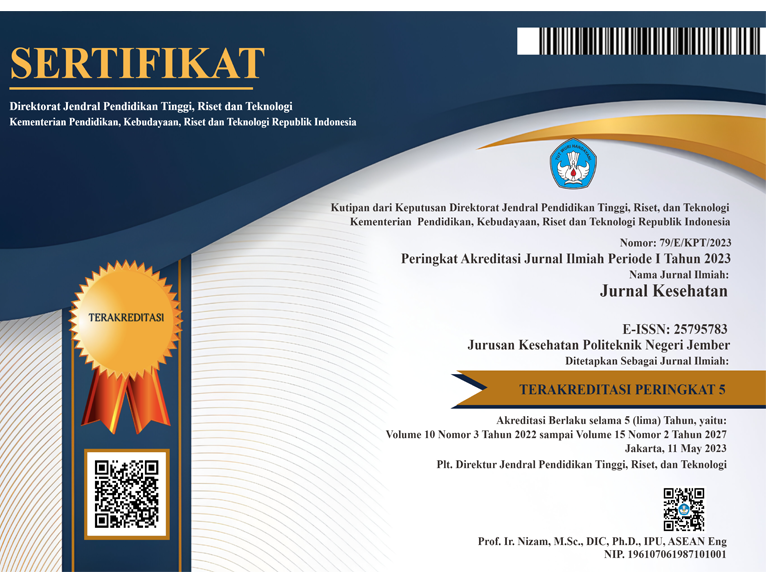Analisis Waste dengan Model Lean Hospital pada Pelayanan Poli Rawat Jalan
DOI:
10.25047/j-kes.v8i1.133Issue:
Vol. 8 No. 1 (2020): AprilKeywords:
Lean, Pelayanan Rawat Jalan, WasteArticles
Downloads
How to Cite
Downloads
Abstract
Salah satu indeks terpenting dari kualitas pelayanan kesehatan adalah kepuasan pasien. Salah satu faktor yang mempengaruhi kepuasan pasien adalah waktu tunggu pelayanan. Manajemen lean adalah metode yang dapat meningkatkan proses pelayanan menjadi lebih efektif dan efisien sehingga dapat mempersingkat waktu tunggu. Penelitian bertujuan untuk mengidentifikasi waste yang terjadi dalam pelayanan rawat jalan. Penelitian ini menggunakan rancangan deskriptif kualitatif. Penelitian dilakukan melalui observasi langsung, in-depth interview, dan Focus Group DIscussion. Penelitian menunjukkan bahwa total rata-rata waktu tunggu untuk pasien rawat jalan di klinik penyakit dalam adalah 199 menit untuk pasien umum dan 408,4 menit untuk pasien JKN. Aktivitas terpanjang dalam rawat jalan adalah menunggu di loket pendaftaran dengan nilai rata-rata 27,5 menit untuk pasien umum dan 147,2 menit untuk pasien JKN. Kedua menunggu aktivitas dokter dengan nilai rata-rata 83,3 menit untuk pasien umum dan 132,6 menit untuk pasien JKN dan yang ketiga menunggu obat di apotek 41,7 menit untuk pasien umum dan 72,9 menit untuk pasien JKN. Waste yang ditemukan saat penelitian yaitu defect, overproduction, transportation, waiting, inventory, motion, overprocessing, and non-utilized talent. Penelitian ini membuktikan penerapan prinsip, alat, dan metode lean dapat mengidentifikasi dan mengeliminasi waste di pelayanan rawat jalan, sehingga menurunkan waktu tunggu dan meningkatkan kualitas pelayanan
References
Alam, S. et al. (2018) ‘Reducing pharmacy patient waiting time’, International Journal of Health Care Quality Assurance. Emerald, 31(7), pp. 834–844. doi: 10.1108/IJHCQA-08-2017-0144.
Almoosa, K. F. et al. (2016) ‘Applying the new institute for healthcare improvement inpatient waste tool to identify “waste” in the intensive care unit’, Journal for Healthcare Quality, pp. e29–e38. doi: 10.1097/JHQ.0000000000000040.
Aswar Nandkeshav R, Kale Kalpana M, Rewatkar Mangesh P, Jain Akanksha, B. B. S. (2014) ‘Patients’ waiting time and their satisfaction of health care services provided at outpatient department of government medical college’, 4(April), pp. 1–3.
Brajer-Marczak, R. and Wiendlocha, A. (2018) ‘Lean Management Concept in Hospital Management – Possibilities and Limitations’, Management Sciences, 23(1), pp. 4–12. doi: 10.15611/ms.2018.1.01.
Burgess, N. and Radnor, Z. (2014) ‘Evaluating Lean in healthcare’. doi: 10.1108/09526861311311418.
Ev, G. and Antony, J. (2014) Reducing Patient Waiting Time in Outpatient Department Using Lean Six Sigma Methodology, Quality and Reliability Engineering International. doi: 10.1002/qre.1552.
Gaspersz, V. (2007) Lean Six Sigma for Manufacturing and Service Industries.
Graban, M. (2009) Lean Hospitals : improving quality, Patient Safety, and employee satisfaction., Productivity Press, New York. World Health Organization.
Gupta, S., Kapil, S. and Sharma, M. (2018) ‘Improvement of laboratory turnaround time using lean methodology’, International Journal of Health Care Quality Assurance, 31(4), pp. 295–308. doi: 10.1108/IJHCQA-08-2016-0116.
Ishijima, H., Eliakimu, E. and Mshana, J. M. H. (2016) ‘The “5S” approach to improve a working environment can reduce waiting time: Findings from hospitals in Northern Tanzania’, TQM Journal, 28(4), pp. 664–680. doi: 10.1108/TQM-11-2014-0099.
Shiu, J. and Mysak, T. (2017) ‘Pharmacist Clinical Process Improvement: Applying Lean Principles in a Tertiary Care Setting’, Can J Hosp Pharm, 70(2), pp. 138–43.
Womack, J. et al. (2005) ‘Innovation series: going lean in health care’, Institute for Healthcare Improvement, p. 21.
Author Biographies
Selly Apriani Lestari, Rumah Sakit dr. Soeratno Gemolong, Sragen, Jawa Tengah
Chriswardani Suryawati, Program magister ilmu kesehatan masyarakat universitas diponegoro
J Sugiarto, Program magister ilmu kesehatan masyarakat universitas diponegoro
License
Authors who publish in this journal agree to the following terms:
1. Copyright belongs to the medical journal as a publication
2. The author retains copyright and grants the journal rights to the first publication carried out simultaneously under a Creative Commons Attribution License which allows others to share the work with an acknowledgment of the author's work and initial publication in this journal.
3. Authors may enter into separate additional contractual arrangements for the non-exclusive distribution of the work (eg sending it to an institutional repository or publishing it in a book) with acknowledgment of initial publication in this journal.
4. Authors are permitted and encouraged to post work online (eg in institutional repositories or on their websites) before and during the submission process, as before and larger citations of published work (see Effects of Open Access).
Selengkapnya tentang teks sumber ini














